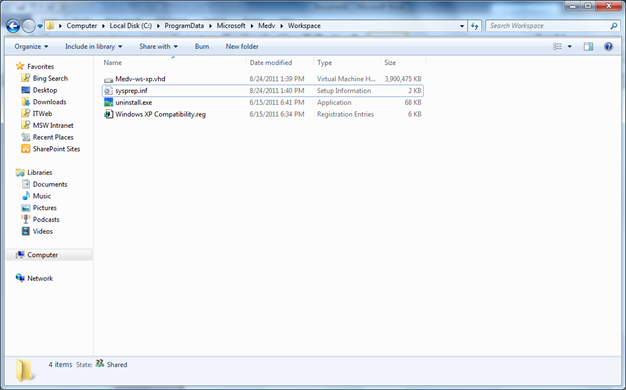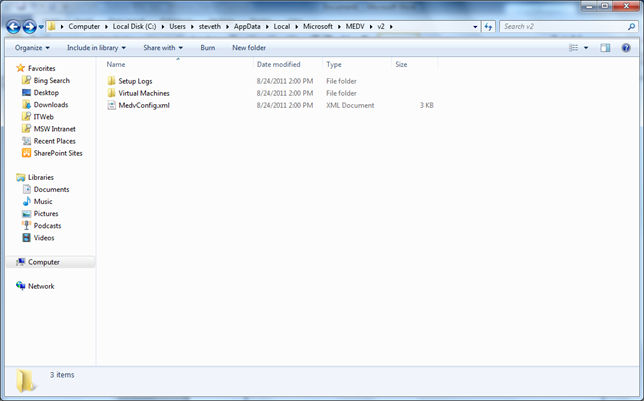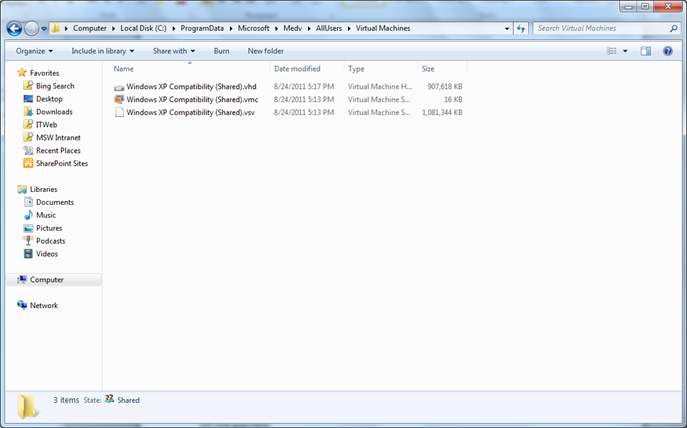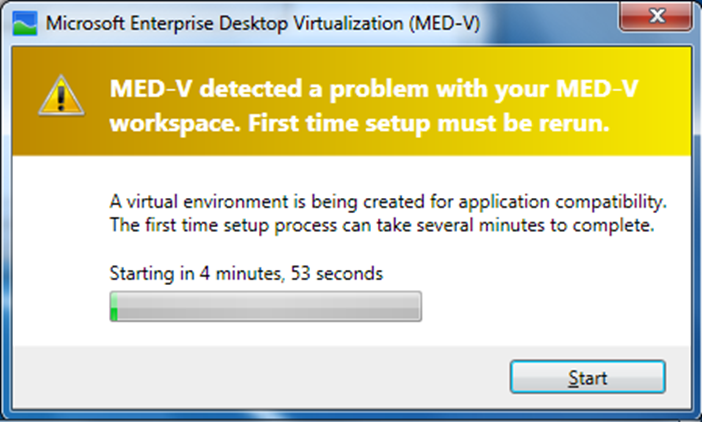MED-V v2: Differences between Shared and Separate Workspaces
When you package a workspace in MED-V, you will need to determine if this workspace will be deployed to a machine where multiple users will be logging on or a single user. If you will be dealing with multiple users, you have two options for deploying the workspace as outlined in the following article:
https://technet.microsoft.com/en-us/library/gg548584.aspx
You can decide that you want to create a unique MED-V workspace for each end user or that you want the MED-V workspace made available to all end users who share the computer. The default is that the MED-V workspace is unique for each end user.
This setting is then stored in the following registry key:
HKEY_LOCAL_MACHINE\SOFTWARE\Microsoft\Medv\v2\VM
Value: MultiUserEnabled
If MultiUserEnabled is set to 1, the workspace is shared otherwise it is separate which is the default.
Separate Workspace Storage
In the separate, or per-user scenario, the parent workspace disk is stored in C:\ProgramData\Microsoft\Medv\Workspace
In this scenario, individual differencing disks will be used for each user. These differencing disks will be stored on a per-user basis in the user’s local profile in the C:\Users\<Username>\AppData\Local\Microsoft\MEDV\v2 directory.
Shared Workspace Storage
In the shared workspace storage mode, the parent VHD will still be stored in C:\ProgramData\Microsoft\Medv\Workspace however the differencing disk will be shared for all users therefore it will be stored in C:\ProgramData\Microsoft\Medv\AllUsers\Virtual Machines.
Changing Mode Post-Deployment
It is important to understand that the configuration mode is designed for handling workspaces upon startup or first use. It is a setting not designed for toggling back and forth between the two modes. If you change this value (stored in HKEY_LOCAL_MACHINE\SOFTWARE\Microsoft\Medv\v2\VM under the value MultiUserEnabled, it will re-trigger an FTS process all over again and display the following error:



